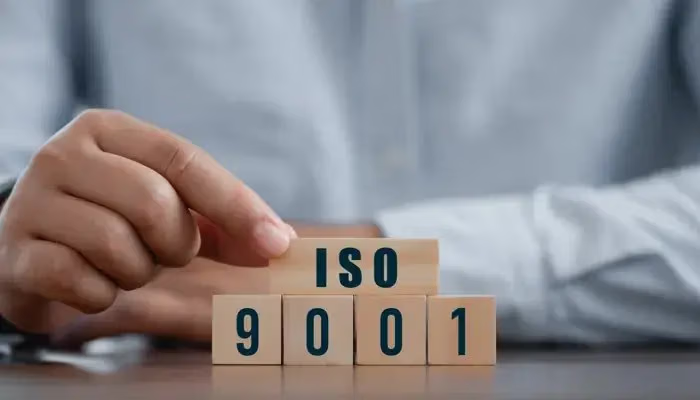Summary: Many businesses choose to follow ISO 9001, a recognized standard, for maintaining quality management systems to meet customer expectations. Moreover, internal audits play a crucial role in implementing ISO 9001 by assessing the system’s effectiveness and pinpointing areas for enhancement. In this article, we provide valuable insights on mastering audits for ISO 9001, offering useful tips, a comprehensive checklist, and step-by-step procedures. To ensure conformity with ISO 9001 standards, internal audits can be scheduled and conducted using effective audit tools and checklists. Additionally, led by an auditor, the audit team executes audits while considering the specific requirements outlined in ISO 9001 clauses. The audit process involves meticulous planning, conducting the audit itself, and reporting findings to guarantee a thorough and comprehensive auditing experience.
The Importance of Internal Audits
Internal audits play a vital role in implementing and sustaining ISO 9001. Furthermore, these audits involve evaluating an organization’s processes, protocols, and adherence to ISO 9001 standards. Not only do they offer valuable insights into the efficiency of the quality management system, but they also pinpoint areas for enhancement or corrective measures. Additionally, they contribute significantly to upholding ISO 9001 compliance and continuously improving practices. By adhering to a predefined schedule, ISO auditors carry out audits following a well-defined audit procedure. This checklist serves as a valuable tool in assessing the organization’s compliance levels with ISO 9001 requirements. It is particularly useful when led by senior auditors who possess extensive knowledge and experience in conducting audits.
Planning for an Internal Audit
Planning is essential, for conducting an internal audit. Creating a checklist specifically tailored to your organization’s processes and procedures is crucial, for an evaluation. The checklist needs to encompass all the clauses and requirements outlined in ISO 9001 allowing auditors to methodically assess the Quality Management System.
1. Carrying Out an Internal Audit
After completing the planning phase, it’s time to proceed with the audit. In this stage, auditors collect evidence, conduct interviews with employees, and observe processes and procedures. Furthermore, they employ various transition words to seamlessly guide them through the audit process.
2. Collecting Audit Evidence
Auditors must gather verifiable evidence to support their audit conclusions. Additionally, this evidence comprises documents, records, and other relevant data. Moreover, auditors need to review these materials meticulously to evaluate compliance with ISO 9001 standards and the organization’s established processes and procedures. It is crucial, therefore, that the evidence gathered is dependable and reflects the processes accurately.
3. Employee Interviews
Interviewing employees plays a crucial role in the audit process. Not only do auditors gain insights into how employees understand and implement the quality management system, but they also interact with individuals across different levels and departments. These interviews provide an invaluable opportunity to clarify any uncertainties, acquire important information, and pinpoint areas for enhancement. Moreover, it’s essential to conduct these interviews in a non-threatening manner to promote open and candid communication.
4. Observing Procedures and Processes
When auditors observe procedures and processes in action, they can effectively evaluate how well they work and whether they meet ISO 9001 standards. By closely watching activities, auditors are able to spot any deviations, issues, or areas that could be improved. It is important, therefore, to look at a representative sample of procedures and processes for a comprehensive assessment. During this observation, auditors need to take detailed notes on what they see and diligently gather evidence to substantiate their observations.
5. Sharing Audit Results
After conducting an audit auditors need to write up a report on their findings and share them with parties. Here are the key steps involved in this process;
6. Drafting an Audit Report
The audit report summarizes what the internal audit uncovered its conclusions and suggestions for improvement. It should be easy to understand, brief, and unbiased. The report should cover details about the audit’s scope methods used criteria examine any issues found that don’t meet standards and areas where enhancements could be made. Including evidence-based findings is crucial along with referencing sections or requirements of ISO 9001. Additionally, the report should highlight any findings or commendable practices noticed during the audit.
How do you maintain efficient audit processes?
Our audit management software supports ISO 9001 internal audits
Presenting Audit Results
Once the audit report is ready auditors should present their findings to individuals like management team members, process owners, or employees, in a manner that captures their attention and is tailored to their understanding. It’s important to emphasize the significance of the findings. How they impact the quality management system of the organization. The presentation should aim to spark discussions and foster collaboration to tackle any identified nonconformities and drive enhancements.
1. Taking Corrective Actions and Follow-up
Dealing with nonconformities and implementing actions are aspects of the internal audit process. The steps, below outline the process for action;
2. Addressing Nonconformities
When nonconformities are uncovered during an audit they need to be promptly addressed. The responsible individuals or teams should delve into the root causes of these issues. Devise corrective measures. The focus should be on resolving problems preventing occurrences and enhancing the efficiency of the quality management system. It’s crucial to document all actions taken and keep track of their progress.
3. Implementing Corrective Actions
Once corrective actions have been formulated they must be put into practice within a timeframe. The responsible parties should carry out these actions. Monitor their impact. Communication about implemented measures needs to reach stakeholders for their understanding and support. Regular evaluations and check-ins are necessary to ensure that disciplinary actions are effective, in addressing any lingering issues.
Continuous Improvement, through Internal Audits
Audits, plays a role in evaluating compliance and serves as a valuable tool for fostering ongoing enhancement within the organization. Below are some ways in which internal audits contribute to the organization’s efforts to improve;
Utilizing Audit Findings for Enhancement
Insights gained from audit findings and observations offer perspectives on both the strengths and weaknesses of the quality management system. Organizations are advised to analyze these findings recognize recurring patterns, pinpoint areas for improvement, and prioritize actions such as refining processes providing training, or adjusting procedures. By leveraging these audit insights organizations can make informed decisions that drive improvement.
Spotting Opportunities for Advancement
Beyond meeting ISO 9001 compliance standards internal audits can reveal opportunities to enhance the quality management system. Through evaluation of processes, procedures, and practices auditors may uncover methods, best practices, or emerging trends that could elevate operational excellence and customer satisfaction. Organizations should be open to embracing these opportunities and finding ways to integrate them into their operations.
Best Practices, for Internal Auditing
Organizations aiming to ensure effective and efficient internal audits should adhere to the following practices;
Ensuring Auditor Competency
Auditors must possess the competency levels, knowledge base, and skill sets required to carry out internal audits successfully. They need to have an understanding of the requirements outlined in ISO 9001 as well as the principles, techniques, and industry practices related to audits. Organizations need to provide auditors, with training and resources to improve their skills. Regular assessments of competency and ongoing professional development should be encouraged to ensure that auditors are well-informed about the standards and practices.
Keeping Audit Records Up to Date
Accurate and detailed audit records are crucial for demonstrating compliance monitoring progress and preparing for audits. Organizations should establish an approach to record-keeping to ensure that all pertinent information regarding audits is recorded and maintained. This includes audit plans, checklists, evidence collected, audit reports, and any corrective actions implemented. Proper record-keeping promotes transparency aids traceability and showcases the organization’s dedication to quality management.
Conducting Routine Reviews of Audit Programs
evaluations of the audit program are vital for its continuous enhancement. Organizations should assess the effectiveness and efficiency of their audits by reviewing factors like audit frequency, coverage, and outcomes. These reviews help pinpoint areas for improvement address any deficiencies or gaps identified and align the audit program with the organization’s objectives.
Getting Ready, for Certification Audits
Certification audits carried out by bodies evaluate an organization’s compliance with ISO 9001 standards. Internal audits play a role in preparing for these certification assessments. Here’s how you can utilize audits to get ready for certification;
Understanding Certification Audits
To prepare it’s crucial to grasp the demands and anticipations of the certification audit process. Familiarize yourself with how the certification procedure works, the criteria used for evaluation, and the specific areas under assessment. This understanding will enable you to align your audit focus on covering the requirements and ensuring readiness for the certification audit.
Using Internal Audits for Preparation
audits offer a chance to pinpoint and rectify nonconformities and areas needing improvement before facing the certification audit. Utilize insights gleaned from audits to implement measures and enhance your quality management system. Addressing issues proactively enhances your chances of achieving an outcome in the certification audit.
Common Hurdles in Internal Audits
Audits may encounter obstacles that impact their effectiveness. Here are some common challenges along with strategies to tackle them;
Overcoming Resistance, to Audits
Employees may perceive audits negatively or fear potential consequences. It’s important to communicate the purpose and advantages of audits to overcome resistance. It’s important to note that audits are design to find areas, for improvement not to assign blame. Encourage a collaborative approach helping employees see the value of taking part in audits.
Juggling Conflicting Priorities
In companies with projects and competing priorities dedicating time and resources to internal audits can be tough. Stress the significance of audits for the organization’s progress and long-term enhancement. Make sure audit activities are integrate into planning and resource distribution. Effective communication and coordination with departments and teams can ease conflicts and garner support for audit initiatives.
Handling Auditor Bias
Auditor bias can affect the fairness and neutrality of audits. To address this issue companies should set up a code of conduct for auditors that underscores objectivity, independence, and impartiality. It’s also beneficial to rotate auditors to prevent any favoritism or partiality, towards processes or individuals. Providing training and continuous professional development can boost auditor skills. Reduce bias.
FAQ | ISO 9001 Internal Audits
What is the difference between internal and external audits?
Individuals within the organization conduct an internal audit to assess the effectiveness of the quality management system. Its primary focus is identifying areas for improvement and ensuring compliance with ISO 9001 requirements. On the other hand, an independent certification body conducts an external audit to evaluate an organization’s compliance with ISO 9001 to grant certification.
How often should internal audits be conducted?
The frequency of internal audits can vary depending on the organization’s size, complexity, and risk profile. ISO 9001 does not specify a specific frequency, but it recommends conducting internal audits at planned intervals to ensure the ongoing effectiveness of the quality management system. Many organizations conduct internal audits annually or biannually, while others may opt for a more frequent schedule based on their needs.
Can I use an internal audit checklist?
Yes, using an internal audit checklist can be beneficial for ensuring a systematic and thorough evaluation of the quality management system. An audit checklist provides a structured framework that auditors can follow during the audit process. It helps ensure that all relevant requirements and areas of assessment are covered. However, it is essential to customize the checklist to align with the organization’s specific processes and procedures.
What happens if non-conformities are found during an internal audit?
If non-conformities are identified during an internal audit, they need to be addressed through appropriate corrective actions. The responsible individuals or teams should investigate the root causes of the non-conformities and develop actions to prevent recurrence and improve the quality management system. The effectiveness of the corrective actions should be monitored, and their implementation should be documented.
How can internal audits contribute to the success of an organization?
Internal audits contribute to the success of an organization in several ways. They identify areas for improvement, allowing the organization to enhance its processes and systems. The organization can proactively identify and address non-conformities by conducting regular internal audits, reducing the risk of quality issues or compliance failures. This leads to improved customer satisfaction, increased efficiency, and better performance.
Image: Adobe Stock – Copyright: © Deemerwha studio – stock.adobe.com





